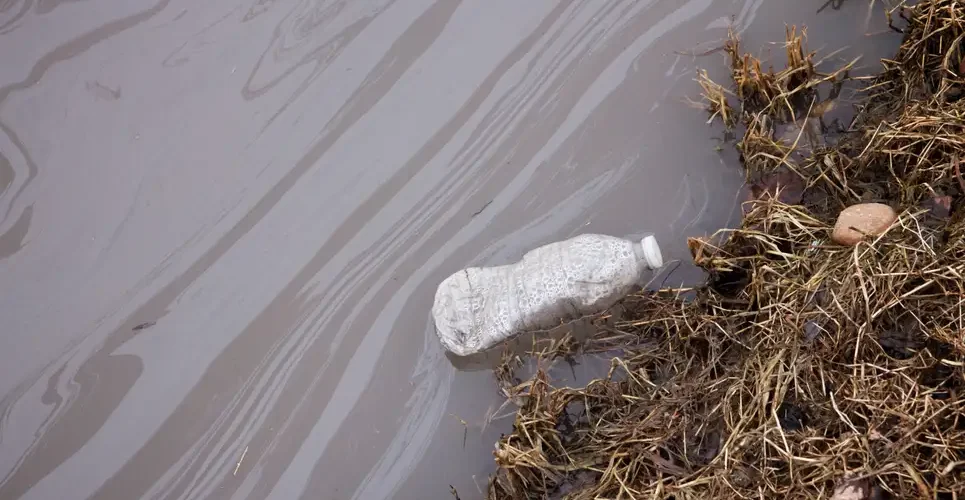They’re everywhere. In the air you breathe, the water you drink, and the soil we grow our food in—decades of industrial and commercial production and use have left basically no corner of our lives untouched by PFAS (polyfluoroalkyl substances), commonly called ‘forever chemicals.’ The two most important things to know about these chemicals: They’re toxic, and they don’t degrade over time on their own. Instead, they accumulate in our environments and in our bodies.
But a newly discovered chemical mechanism could help in the fight against mounting PFAS pollution. Chemists have found a way to break down some types of these chemicals into harmless, component parts using inexpensive and common tools. The new research, published today in the journal Science, is a big step forward in our understanding of how these compounds react. And though we’re still a long way from solving the problem, we’re just a little bit closer to a healthier world.
Why PFAS Are So Dangerous?
PFAS are chemicals with a lot of different uses (food packaging, fire fighting foams, nonstick cookware, furniture, cosmetics, etc…). Their main draw is that they’re super good at repelling water, oil, and grease, and even at tamping out fires. They do all this by being super-duper non-reactive. PFAS are made up of highly stable molecules that basically just stick to themselves.
When they leach into the environment and enter our bodies, our systems have no way of getting rid of them. So, they pile up and cause problems. Research has found links between PFAS and multiple types of cancer, immune system problems, high cholesterol, liver disease, and issues with pregnancy and infant development. (Because of all these health effects, the EPA announced new limits on PFAS in drinking water in June, advising that safe water supplies should basically contain no detectable PFAS.)
Yet they’re very difficult, nigh impossible, to avoid. PFAS have been detected in drinking water across the U.S., both indoor and outdoor air, farm fields worldwide, fish, cosmetics, and elsewhere.
Even with lots of human effort, these forever chemicals have proven incredibly difficult to break down. Incineration doesn’t seem to work. Lots of strategies can lead to other toxic byproducts. And many methods can be cost-prohibitive, limited, or hard to scale up—like heating water containing PFAS to super high temperatures.
What’s New About This Method?
“It think it’s fair to say that all other emerging PFAS degradation methods are things that you would classify as very high energy [or] relatively exotic conditions,” said William Dichtel, a chemist at Northwestern University and one of the study researchers, in a press briefing on Tuesday. “That’s really what differentiates our finding from from from everything else that that’s out there,” he added— emphasizing the accessibility and relative ease of the new method.
Using just a little bit of heat and supplies that can be found in high school chemistry labs (sodium hydroxide, i.e. lye, and a solvent called DMSO), the researchers were able to take one type of concentrated PFAS and break it up into smaller, non-toxic compounds.
“Most chemists are taking two molecules and squishing them together to make one big molecule, like taking two Legos and putting them together,” explained Brittany Trang, who was the study’s lead researcher and completed her PhD at Northwestern University last month, in the press briefing. “But instead, what we were doing is smashing the Lego to bits and looking at what was left to figure out how it fell apart.”
And that second step is important. Not only did the chemists successfully degrade the PFAS, but they used quantum mechanical models to figure out exactly how it happened and to provide a road map for others to use in related research.
Which Diana Aga, an analytical chemist and PFAS researcher at the University of Buffalo who was uninvolved in the new study, told Gizmodo she was especially grateful for. “I appreciate everything that this publication has done in terms of detailed analysis and comprehensiveness.”
To smash the Legos apart, Trang and her co-researchers heated their PFAS, lye, and DMSO solution at temperatures between 80 and 120 degrees Celsius (176 and 248 Fahrenheit). After four hours, nearly 80% of the PFAS was gone, and after 12 hours, more than 90% of it disappeared—replaced by benign carbon byproducts like oxalate, which is in many of the vegetables we eat, or glycolic acid, which is commonly used in skincare products.
Characterizing those byproducts is a big deal as well, Aga said. It’s a thorough step that helps ensure more environmental harm won’t come from trying to tackle the issue (which has happened before with PFAS). “This study is beautiful, because they did that,” she added.
Read more at Gizmodo.com









